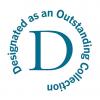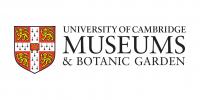The 'Histories'
The primary historical record associated with the collections are the ‘Histories’, containing correspondence and documentation relating to the acquisition and use of the collections from 1819 – 1911.
They were compiled by two early superintendents of the Museum. With financial assistance from the Designation Challenge Fund, the contents of the Histories have been conserved, catalogued and digitally scanned.
Archives
As well as the ‘Histories’, there are major archive collections from scientists associated with the Museum or its collections. The Museum holds major archive collections for Strickland and Swainson. Both were great ornithologists, but both were also concerned with much wider issues – the process of biological classification, the rules of nomenclature and the significance of taxonomic structures.
William Swainson (1789-1855) promoted the ‘Quinarian system’ of classification which enjoyed a tremendous vogue in the 1830s. Hugh Strickland (1811-1853) rejected this classification, and in 1843 propounded his own theories of classification at the meeting of the BAAS in Cork. He also prompted the BAAS to appoint a committee, which included Darwin, Henslow and Owen, to consider the “rules by which the Nomenclature of Zoology may be established”.
The Museum archives contain the annotated manuscript copies for Swainson’s popular science books, and seven volumes of Strickland’s correspondence relating to these interests, as well as his 2 metre hand-drawn wall chart on ‘The Natural Affinities of the Incessorial Birds’. This chart, which was presented at the BAAS meeting, is of particular interest because it presents, not a phylogenetic tree of the type with which we have grown familiar, but a map showing degrees of affinity.
Additional material in the archives includes Strickland’s documentation for his book on “The history, affinities and osteology of the Dodo, Solitaire etc.” (1848, written with A.G. Melville), the manuscript copy of Leonard Jenyns' volume on the Fishes collected on the Beagle voyage, five volumes of correspondence between Alfred Newton and John Gurney (a founding member of the Norfolk Naturalists Trust), and much correspondence relating to Parrington and other more recent staff of the Museum.
Photographic collections
We have photographic material dating from the early 20th century, notably quarter plates taken by Hugh Cott in Africa and Con Benson in Madagascar. Much of this remains to be catalogued and assessed. The Museum also retains a number of 19th century teaching charts (e.g. by Owen, “On the Nature of Limbs”) and German embryological models.





